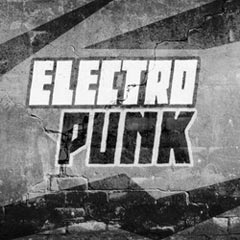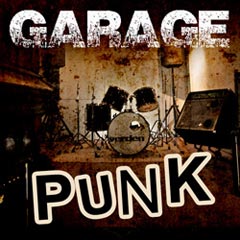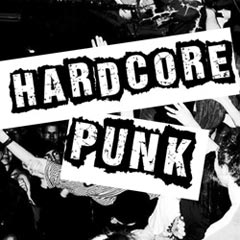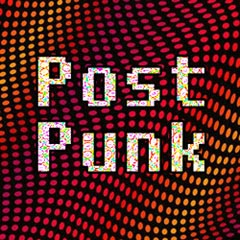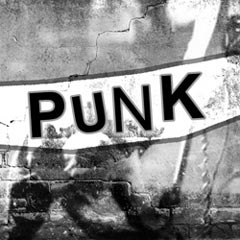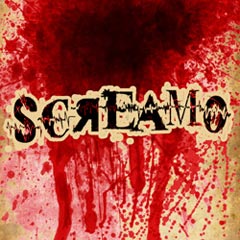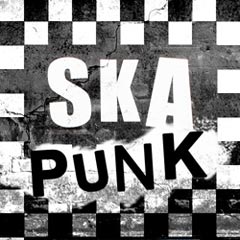Post punk
ON AIR - PROGRAMMING
Demilitarized punk, a less violent, diluted with electronic sounds and synthetic distortions. From the 1980s onwards, Post Punk music took form in many different variations, from eclectic basslines and guitar riffs to chaotic expressions of nihilism and despair. With an emerging presence of angst and experimentation dominating early production, it fractured the scene in distinct subsections of genres that occurred almost simultaneously offer something unique for everyone to enjoy. Legendary acts such as Joy Division and The Cure continued to progress their primal tempos via haunting mŽlanges of minimal wave disco and art punk. While krautrock and experimental motoric rock altered modern valents with stark psychological images using driving Kraftwerklike rhythms levels. Dub filled drudgery cliques deepened while soaring dreamscapes pulled dark notions of jazz into goth territories. Growing up scrunched between genres showed no limitsÑteardrop singing suppressed images clashed with characters glassed in darkness tracking lost thoughtÐforward thinking beats blasted realms into untapped fever dreams hoping on innovative waves one final time could ye fetch respite? Such contemplative music entralled us all throughout the grunged up decadence to celebrate enlightened age protest suggesting valid Hope was alive again Ñ Post punk digging savage clawsÉ Wrapping isolated progress around a propulsive centerÐ songwriters reinvested how words were heard marrying musical theatrical homage before diving layer by sublimely towards ever expanding depths coaxing rich secrets for resonating pleasure worthy of our awe. Post punk is an experim
Exploring the Eclectic World of Post Punk Music
Post Punk music emerged in the late 1970s as a response to the nihilistic sounds of punk rock. As the name suggests, Post Punk rejected the overtly political and aggressive themes of punk and instead embraced experimentation and artistic expression. The genre continued to evolve and diversify through the 1980s, resulting in some of the most exciting and innovative music of the era. From Joy Division to The Cure, Post Punk has given birth to some of the most influential bands and sounds in modern music. In this blog post, we will explore the world of Post Punk music, delving into its many sub-genres, iconic artists and lasting impact on the music scene.
At its core, Post Punk is defined by its experimentation. From the outset, artists sought to push the boundaries of conventional rock music, incorporating elements of everything from dub to krautrock. One of the earliest expressions of Post Punk was the use of synthesizers, which allowed artists to create ethereal soundscapes that were both haunting and beautiful. Bands like Joy Division and The Cure used these sounds to create a sense of despair and introspection present throughout their music.
Post Punk went on to inspire myriad sub-genres that continue to influence contemporary music. One of the most important of these was Gothic Rock, which emerged in the late 1970s and early 80s. Gothic Rock was characterized by its dark, macabre themes, its use of spooky imagery, and its fusion of Post Punk and psychedelic rock sounds. Bands like The Sisters of Mercy and Bauhaus were pioneers of this genre, creating music that still inspires listeners to this day.
Another important sub-genre of Post Punk was New Wave. New Wave took the sounds of Post Punk and added a pop sensibility, creating upbeat, catchy music that remains hugely popular today. Bands like Blondie and Talking Heads helped popularize this genre, which went on to inspire the synth-pop of the 1980s and beyond.
Despite the diversity of sub-genres, all Post Punk music shares a commitment to artistic experimentation. This commitment can be seen in everything from the minimalist basslines of Joy Division to the frenetic energy of The Birthday Party. Even as Post Punk music continues to evolve and inspire new genres, its spirit of innovation remains at the core of everything it produces.
Post Punk music is a fascinating, complex genre that defies easy categorization. Its emphasis on experimentation and artistic expression has made it one of the most important and influential genres in modern music. From its earliest days to its contemporary iterations, Post Punk has continued to inspire artists and music lovers alike. Whether you are a fan of electronica, goth, or punk, there is something in the eclectic world of Post Punk that is sure to speak to you. So why not take a dive into this fascinating genre for yourself and see what all the fuss is about? You never know what you might discover.
Exploring the Eclectic World of Post Punk Music
Post Punk music emerged in the late 1970s as a response to the nihilistic sounds of punk rock. As the name suggests, Post Punk rejected the overtly political and aggressive themes of punk and instead embraced experimentation and artistic expression. The genre continued to evolve and diversify through the 1980s, resulting in some of the most exciting and innovative music of the era. From Joy Division to The Cure, Post Punk has given birth to some of the most influential bands and sounds in modern music. In this blog post, we will explore the world of Post Punk music, delving into its many sub-genres, iconic artists and lasting impact on the music scene.
At its core, Post Punk is defined by its experimentation. From the outset, artists sought to push the boundaries of conventional rock music, incorporating elements of everything from dub to krautrock. One of the earliest expressions of Post Punk was the use of synthesizers, which allowed artists to create ethereal soundscapes that were both haunting and beautiful. Bands like Joy Division and The Cure used these sounds to create a sense of despair and introspection present throughout their music.
Post Punk went on to inspire myriad sub-genres that continue to influence contemporary music. One of the most important of these was Gothic Rock, which emerged in the late 1970s and early 80s. Gothic Rock was characterized by its dark, macabre themes, its use of spooky imagery, and its fusion of Post Punk and psychedelic rock sounds. Bands like The Sisters of Mercy and Bauhaus were pioneers of this genre, creating music that still inspires listeners to this day.
Another important sub-genre of Post Punk was New Wave. New Wave took the sounds of Post Punk and added a pop sensibility, creating upbeat, catchy music that remains hugely popular today. Bands like Blondie and Talking Heads helped popularize this genre, which went on to inspire the synth-pop of the 1980s and beyond.
Despite the diversity of sub-genres, all Post Punk music shares a commitment to artistic experimentation. This commitment can be seen in everything from the minimalist basslines of Joy Division to the frenetic energy of The Birthday Party. Even as Post Punk music continues to evolve and inspire new genres, its spirit of innovation remains at the core of everything it produces.
Post Punk music is a fascinating, complex genre that defies easy categorization. Its emphasis on experimentation and artistic expression has made it one of the most important and influential genres in modern music. From its earliest days to its contemporary iterations, Post Punk has continued to inspire artists and music lovers alike. Whether you are a fan of electronica, goth, or punk, there is something in the eclectic world of Post Punk that is sure to speak to you. So why not take a dive into this fascinating genre for yourself and see what all the fuss is about? You never know what you might discover.
What are you thinking about?

